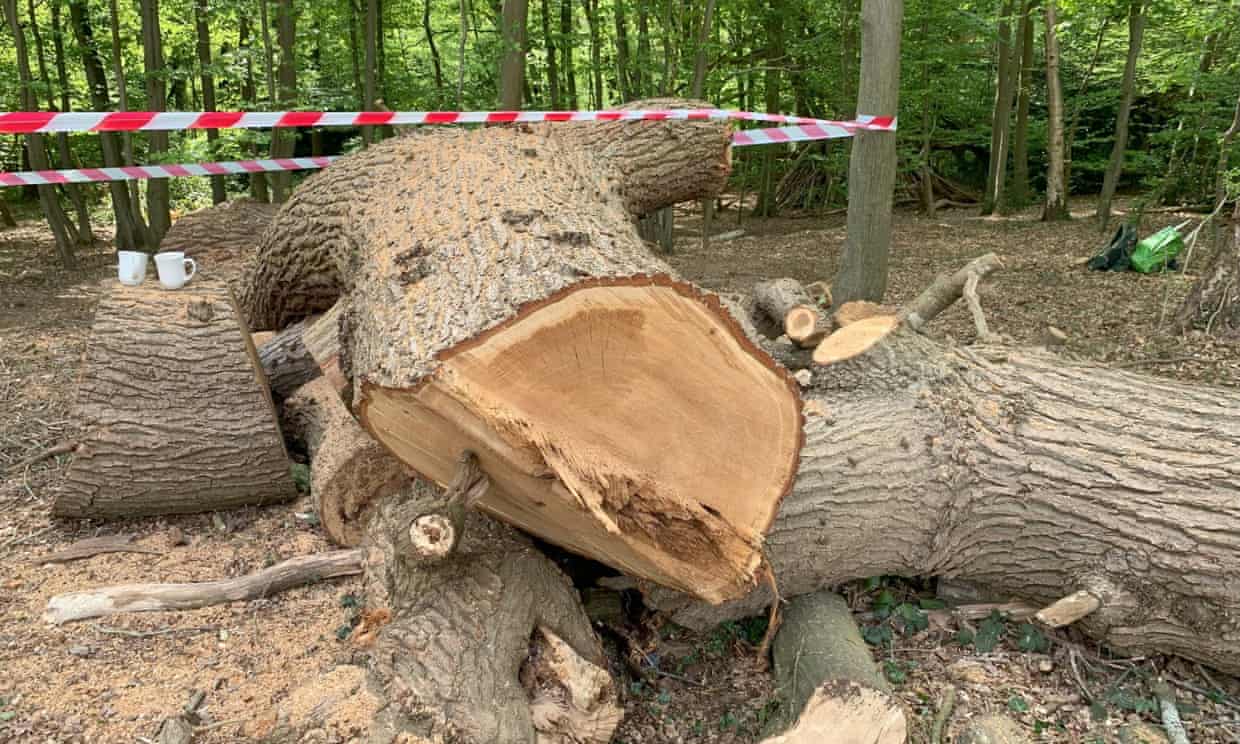The abrupt removal of one of London’s oldest and largest oak trees has been reported to law enforcement, prompting advocates to renew their demands for improved safeguarding of these nationally historic trees.
Located in Whitewebbs Park, Enfield, the oak tree was estimated to be up to 500 years old, boasting a trunk circumference exceeding six meters. Although it was included in the Woodland Trust’s register of ancient trees, it did not hold an official tree preservation order.
The tree was chopped down earlier this month by contractors employed by Mitchell and Butlers Retail (M&BR), operators of a nearby Toby Carvery, who lease the property from Enfield Council.
The council stated that it was not notified of the intention to fell the tree and has requested the Metropolitan Police to investigate the matter.
Council leader Ergin Erbil commented: “We are considering this a case of criminal damage and have brought it to the attention of the police.”
To protect the remaining trunk, the council has imposed a tree preservation order in hopes of allowing it to regenerate.
A representative from M&BR claimed their contractors alerted them to the tree’s state of decay, stating: “The tree was trimmed after we were informed that it posed a serious health and safety concern.
“This was a necessary step to ensure the safety of our employees and patrons, to whom we owe a duty of care. Following a thorough assessment, our specialist arborists determined that the split and deadwood represented a significant safety threat and recommended the tree’s removal.
“We took all appropriate precautions to comply with legal obligations. We are thankful to our expert contractors for promptly highlighting this hazard, enabling us to act before any harm occurred.”
Environmental advocates have expressed their outrage regarding this incident. Paul Powlesand, co-founder of Lawyers for Nature, remarked on X: “This underscores the urgent necessity for stronger protections for our veteran and ancient trees. A building of the same age as this tree would almost certainly receive listing (regardless of ownership), and we should establish a similar system for trees, accompanied by equivalent enforcement and penalties.”
Adam Cormack, head of campaigning at the Woodland Trust, stated: “This disheartening act serves as a reminder that not every ancient tree is in a secure environment.
“Felling an oak tree of such magnitude and vintage is quite rare. Legal protection for trees like the Whitewebbs Oak has long been overdue.
“This matter has broad public backing and presents a clear opportunity for the government to intervene.”
The Woodland Trust is advocating for legislation that would ensure a register of nationally significant heritage trees receives preservation orders.
Later this month, a trial is scheduled for two men accused of cutting down the sycamore gap tree at Newcastle Crown Court.
Experts indicate that ancient oaks have greater ecological significance than sycamores, as they host hundreds more species.
A blog post by Thores Trees mentioned: “Ancient trees such as this one are self-sustaining ecosystems. This oak was a lapsed pollard, indicative of historical land management, allowed to mature over centuries into a vast and unique habitat. Due to its size and age, it provided a home for countless species, many of which depend exclusively on old trees like this for their survival.”

